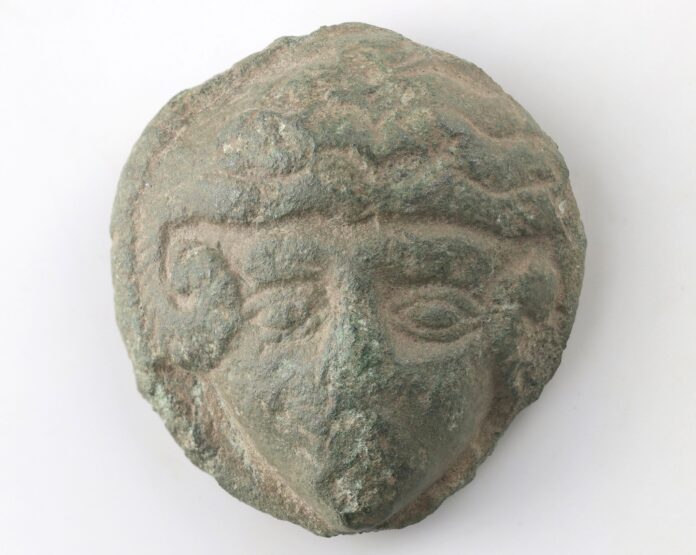Metal detectorists have discovered a “unique” artifact that archaeologists say features a depiction of Alexander the Great, and is mystifying the experts surprised at the location of the find.
Finn Ibsen and Lars Danielsen came across the object in question, a small bronze fitting measuring around an inch across, near Ringsted—a city located centrally on the island of Zealand, Denmark.
“[A] mysterious and absolutely incredible find in the field,” Museum West Zealand said in a Facebook post. “Finn and Lars were out with the metal detector in a field near Ringsted, and their eyes widened when it dawned on them what they had suddenly found. It is tiny and absolutely spectacular.”
The bronze disk is thought to date to around the year A.D. 200 and bears a portrait of Alexander—one of the greatest rulers of antiquity—on one side.
Museum Vestsjælland
Alexander the Great ruled the ancient kingdom of Macedon—centered on the northeastern part of the Greek peninsula—between 336 B.C. until his death in 323 B.C. at the age of 32.
During his reign, he waged extensive military campaigns, creating one of the largest empires ever seen—spanning from Greece to northwestern India. Undefeated in battle, he is widely considered to be among the most successful military commanders in history.
Alexander was already being venerated in the first centuries after his death, becoming a significant role model for Roman emperors. The emperor Caracalla, who reigned from A.D. 198-217, even saw himself as the reincarnation of Alexander.
“[Alexander] became a legend with which power could be justified. Many subsequent rulers wanted to use his face to show a connection to Alexander’s greatness,” archaeologist Freerk Oldenburger with Museum West Zealand told Danish media outlet TV2 Øst.
Alexander is easily recognizable on the bronze fitting found near Ringsted, which also contains traces of lead, thanks to the wavy locks of hair and ram horns beside the ears.
“It’s fantastic. Up here in Scandinavia you don’t usually find anything about Alexander the Great,” Oldenburger told TV2 Øst.
According to the researcher, the portrait is very similar to one found at the Illerup Ådal archaeological site on the Danish mainland. This was the site of a great battle between two Germanic tribes that took place around A.D. 200—roughly when the bronze artifact from Zealand was made.
Among the objects found at the site were shields featuring small decorative disks with portraits of warriors. And one of these bears the aforementioned image of Alexander the Great, which resembles the portrait on the artifact from Zealand.
But despite the clear depiction of Alexander, the latest find raises many more questions than answers at this stage, according to archaeologists. For example, it is not clear if the object was created by the Romans, who used the same lead-containing alloy for casting statuettes. Was it cast by the Romans from a remelted statuette, or did the remelting take place on Zealand?
If the object was cast by the Romans, how did it end up in a field on Zealand? The territory conquered by Rome never reached the area occupied by modern Denmark. But the Romans did maintain trade links with the Germanic peoples who once lived in this region.
And if the object is of Germanic origin, what was its significance to these people? Did they believe that it could bring good luck on the battlefield? Were they even aware of who the face represented?
“The possibility is that they saw one of their own gods in [the artifact]. But I actually think they knew it—Alexander’s myth has been so big in Europe, Asia and North Africa,” Oldenburger said.
It also not clear what the function of the object was. It may have been a decorative disk for a shield, or it could have formed part of a belt sword holder, for example.
“The small bronze disk… shows that even the smallest archaeological objects can hide absolutely incredible stories,” archaeologist Oldenburger added in a press release.
“This is a unique find in Scandinavia with connections to one of the most famous personalities in world history.”
Do you have a tip on a science story that Newsweek should be covering? Do you have a question about archaeology? Let us know via [email protected].
Uncommon Knowledge
Newsweek is committed to challenging conventional wisdom and finding connections in the search for common ground.
Newsweek is committed to challenging conventional wisdom and finding connections in the search for common ground.


